Brian Niemeier's Blog: Kairos - by Brian Niemeier
January 20, 2025
Nerdocracy


Anyone who's been paying attention knows that the entertainment industry has long been an establishment propaganda organ. The more astute observers know that the subversion of Hollywood started decades ago.
The movie, music, and game industries aren't alone in their anti-evangelism for the new civic religion. Almost every major corporation has enthusiastically jumped on the bandwagon. As a matter of fact, they're driving it.
Remember when megacorp uber-nerd Bill Gates unveiled his plan to make people imbibe shit? The fact that a captain of industry is trying to literalize an old insult tells us two things:
The heads of megacorps have too much money and power.
The folks in charge of those megacorps are unserious nerds living out their most paranoid power fantasies.
Even the more astute cultural observers who see that the rot started as far back as the 60s tend to have a blind spot for the 80s. But the Death Cult's hold on major studios hadn't slackened since The Pawnbroker and Easy Rider. Amid the pulp resurgence led by relative outsiders like George Lucas, it was easy to miss the ongoing subversion beneath the surface.
A vector for that subversion that largely flies under the radar is the nerd comedy subgenre that carved out a niche in the 80s. 1984's Revenge of the Nerds is the prime example, but all of these flicks had the same basic premise: a motley gang of college misfits get hassled by the football team and use their smarts to get even. Hilarity ensues.
Because people naturally root for the underdog, audiences overlooked the subtext of these movies. The sympathetically drawn protagonists were always a bunch of neckbeards, spergs, and malakoi put upon by normal people.
If you're at all clued in to how the Death Cult operates, that inverted dynamic will look awfully familiar. Like all religions, the Cult gives its adherents an identity. That identity, which is on thinly veiled display in the nerd revenge flicks, is that of the long-suffering underdog persecuted by the tyrannical majority. Even in the 80s nerd movies, the tyrants are always straight, white Christians.
It's no accident that those movies' plots look like 2010s Reddit with a time machine. The whole point is to portray deviancy as smart and cool while denigrating normality. That's culture war in a nutshell.
Fast forward thirty years, and real-life nerds who watched these movies in high school now run global corporations with undreamed-of war chests. Guys like Bill Gates, Tim Cook, and Sundar Pichai still see themselves as victims just because normal Americans exist. They're still fighting the Man long after having become the Man. It's a Nerdocracy, and we're all WASPish ski instructors.
I suggest reclaiming what dignity you can by not contributing to our nerd overlords' war chests.
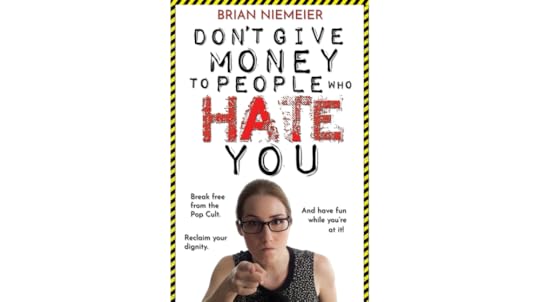
January 17, 2025
Defending December 25th


This post is a bit late, but combating the persistent anti-December 25 zombie memes merits preserving it for posterity now.
December 25 really is the date of Jesus' birth.
Zechariah was in the priestly course of Abijah. Thus he served in the temple in the 8th and 32nd week of the year.
Luke's Gospel has him serving on the Day of Atonement (at the end of September) and conceiving John the Baptist right when he got home.
This places John's birth in late June.
The Catholic Church has traditionally celebrated the Nativity of John the Baptist on June 24, which fits Luke's time line perfectly.
The Protoevangelium of James flat out confirms St. John's late September conception. Sure, it's apocryphal, but that doesn't disqualify it as a source of historical data.
Luke clearly states that Jesus was conceived when Elizabeth was six months pregnant with John.
Scriptural, traditional, and historical evidence place John's birth in late June. Adding 6 months puts Jesus' birth in late December.
This is nothing new, either. The Church Fathers knew the evidence & reached the same conclusion.
St. John Chrysostom preached his famous Christmas Morning Homily on December 25, 388.
St. Hippolytus, who died in AD 235, wrote, "The first advent of Our Lord in the flesh occurred when He was born in Bethlehem on December 25."
But the tradition goes back even further than that!
St. Theophilus, d. AD 181, wrote, "We ought to celebrate the birthday of Our Lord on what day soever the 25th of December shall happen."
There you have it. The Bible, eyewitnesses to Jesus' ministry who knew and loved Him--including His mother--and His Apostles' early successors, give strong testimony that Jesus really was born on December 25.
There are really only 3 objections to affirming December 25 as the actual date of Christ's birth. I'll answer them in turn.
Objection 1: Luke has shepherds tending their sheep on the night of Jesus' birth, but shepherds don't graze their flocks in winter.
Answer: Bethlehem has a similar climate to Houston. You'll find sheep out in the pasture in both places year-round. Even if it didn’t, sheep come equipped with natural wool sweaters.
Objection 2: The Church "baptized" Saturnalia, an ancient Roman feast, by setting the celebration of Christmas to the same date.
Answer: Saturnalia was held on the Winter Solstice, between December 17 and 23. The dates simply don't match. Close only counts in horseshoes & hand grenades.
Objection 2: OK, if not Saturnalia, then Sol Invictus.
Answer: The Emperor Aurelian did decree the feast of Sol Invictus in 274, prior to the first documented celebration of Christmas on December 25, 336. But there's no record of Sol Invictus' celebration on December 25 until 354, when Julian the Apostate moved it in the original War on Christmas.
TL; DR: Scripture, tradition, and history attest to December 25 as Christ's actual birthday.
Looking for fun adventure fiction by an author who doesn't hate Christians? Look no further!

January 16, 2025
Grandma's Phone


Here at the end of the internet, 4chan stands as the great archive of a vanishing culture built online. Its various boards are the true successors of the Neolithic campfires around which hunter-gatherers shared tribal lore. Spend any length of time browsing /x/ or /k/, and you'll soon discern a unique storytelling tradition with its own customs and archetypes.
Most of the greentext tales are copypastas swapped back and forth by aesthetically impoverished Millennials. But every once in a while, you stumble across a series of posts with a ring of truth. Pun intended.
Transcribed and reformatted from greentexts, with connective tissue added for coherence and pacing, a long-forgotten Anon writes:
I was homeless for most of one semester in college. Here's my experience.
Dad had been out of the picture for years when Mom died. I went to live with my uncle, her brother. He was a truck driver who was gone most of the time, leaving me at home with his wife. She always bitched and snapped at me, blamed me for everything that ever went wrong. I think she resented me being there because she had no kids of her own.
Sorry for the backstory, but my childhood situation is important to understand for later.
As you'd imagine, I couldn't wait to get out of that house. I started applying to colleges at the start of senior year and got accepted to one out of state. Back then my modest inheritance paid for tuition. I got a job at McDonald's to cover living expenses and had just enough to split an off-campus apartment with a stereotypical stoner roommate. It ended up being cheaper than the dorms in the long run.
Taking a full class load and working nights full-time wore me out, but the freedom of finally living on my own was worth it. I really did feel as if a physical weight had been lifted off my chest. By the end of the year, I'd started hanging out with some people in my classes and even had a girlfriend for a few months. That first college semester was the best time of my life up to that point.
One night in early February, I got home from a double shift to find my apartment trashed. My first thought was to call the cops, but it turned out I didn't have to because they brought me in for questioning. At the station the cops informed me that they, and not some crackhead burglar, had raided our pad. To make a long story short, my pothead roomie got four months for possession. I walked after I passed every drug test and proved I was hardly in residence except to crash for a few hours a night.
I was a free man again, but with a whole new problem. My meager wages could not cover rent and living expenses, and I had no time to find a new roommate. Even worse, when I asked the landlord for more time, I found out that my old roommate, who'd been in charge of depositing the rent since I was gone so much, had been spending our rent money on drugs. The landlord had been leaving messages with him for weeks, but Stoney McStoneface hadn't told me.
Another long story short, my landlord was in no mood to cut me any slack and evicted me a couple of days later. I sold everything I could, packed the rest in my green Civic hatchback, and drove around for a whole day wondering what to do. No way I'd go crawling back to my aunt. I vowed that I'd starve first.
Thankfully it didn't come to that. I spent a couple of weeks crashing on various friends' couches. Not wanting to wear out my welcome, I tried sleeping in my car after that. With a nice electric blanket, a car can actually be a cozy place to sleep. Another run-in with the cops taught me right away to choose my parking spots carefully. A side street on the line between commercial and residential zones is best for car camping. If you get a car cover and keep lights to a minimum, no one knows you're inside. Nearby businesses think the car belongs to a local resident, and neighborhood residents think it belongs to a local business, so no one calls the cops.
I lived out of my car for a little over a week, switching between five parking spots I'd scoped out. The cops didn't bother me again, but the low duration and quality of sleep started taking a toll on my school and job performance. I needed a better solution.
One presented itself the next night I shambled into work, feeling like I'd been dragged behind a bus. A coworker who was also a friend of my ex-girlfriend started chatting about how my ex-GF's grandma had just been put in a nursing home. That news made me sad because my ex-GF's grandma was a super nice old lady. She'd taken to me right away, giving me an open invite to hang out and study at the house where the two of them lived. Since I kept such odd hours, Grandma had even let me have a key so I could get in without disturbing her. She'd already been pretty infirm, basically bedridden, when her granddaughter and I were still dating. Several study and make-out sessions had been interrupted by my GF's ringing phone. The house had a second line going to the attic bedroom, and Grandma would call it from her room downstairs when she needed my GF for something.
Don't get the wrong idea. Our breakup had nothing to do with Grandma. I still miss her and wish I'd had a grandma like her to live with instead of my bitchy aunt.
When my coworker told me that my ex-GF had moved back with her parents out of town, and Grandma's house was empty while they got it ready to sell, I got an idea.
That night after closing, I parked on a side street just off the main drag between a video store and a house rezoned as student lodgings. Much like my old apartment. I walked two blocks, keeping my coat's hood up, not just for the cold but to avoid notice, and turned down the alley that ran behind my ex-GF's old house.
Every crunch of my shoes on the pea gravel set me on edge. Most of the houses on the alley were dark, but a few kitchen and back bedroom lights shone behind chain link fences. I made it to my ex's back yard gate, took a breath, and swung it open. The rusty creak made me cringe.
Right away I got visual confirmation of my coworker's story. Grandma's wrought iron patio set was gone. So was the Lincoln that had sat idle in the driveway as long as I'd known my GF. The house was totally dark.
Having gone that far, I decided to go all-in. I hurried to the back door and pulled out my key. Half-expecting that they'd changed the lock in the past months, I tried the key. It fit. I was in.
A short flight of steps to my right rose from the back landing to the kitchen. It was empty. Even the stove was gone. Nothing moved on the main floor, at least nothing I could see in the darkness.
The even deeper darkness of the basement yawned down a longer stairway before me. I tiptoed down the carpeted steps. This wasn't a dirty, spidery cellar. It was mostly finished, with nice carpeting and paneling, even a full bathroom. No sign of human habitation remained except the fading scent of a pineapple plug-in.
I did a walkthrough of the whole house. Every stick of furniture was gone. I was alone.
As quietly and quickly as I could, I walked back to my car and grabbed the sleeping bag and toiletries I'd added to my homeless guy kit. Returning to the house, I went down to the basement again. The main room had a small door in the back wall next to the steps. It blended in with the paneling and led to a little storeroom. The floor was carpeted in there, too, and the window was painted over. I shut the door, unrolled my sleeping bag, and read a paperback novel by the glow of a pen light until I drifted off.
When my watch alarm went off an hour before dawn, I woke up feeling like a million bucks. But trepidation set in again. I still had to make it back to my car unnoticed.
I rolled up my sleeping bag and stashed it in the drop ceiling. After thoroughly checking my cozy storeroom hotel for any sign of my presence, I snuck out of the house, locked the back door behind me, and headed back towards my car at a brisk but quiet pace.
The combined wave of relief and rush of tasting forbidden fruit almost overwhelmed me when I sat back behind the wheel and started the engine. Driving away scot free felt almost as good as living on my own for the first time.
Over the rest of the semester, I developed a pretty workable pattern. On weekdays I'd go to class and hang around campus until work. After my shift, I'd park in one of my rotating safe spots and walk to Grandma's house. There, I'd take a shower, being careful to wipe the bathroom dry with my towel afterward. The basement bathroom was centrally located with no windows, so I didn't see much risk in having the light on in there. Once I'd gotten myself cleaned up, I'd retire to my small but comfy storeroom to grab a few hours' sleep before sunrise. On the weekends, I'd couch surf at friends' apartments.
For the first time since I'd been kicked out of my place, my life had a semblance of stability. My grades were good. Work was going good. I secretly hoped my new setup would last until I graduated. But a part of me knew it couldn't.
One unseasonably cold night in March, I got off work later than usual. By the time I'd parked, walked the two and a half blocks to Grandma's house, and bedded down in the storeroom, I was trashed. The next thing I knew, I was opening my eyes to see a thin line of light shining under the door.
Panic hit me like a jackhammer. I sat there, practically hyperventilating, racking my brain for what to do. I finally cracked the door open to see sunlight pouring through the basement windows. Checking my watch, I saw it was 7:18. I'd slept through my alarm!
Still being as careful as I could, I left the house in broad daylight, sure I'd be discovered this time. Somehow I made it back to the car without meeting anyone on the way. The five-block drive to class seemed to take hours, during which I expected flashing blue and red lights to appear behind me at every turn.
I got to school just fine and went through the day without any problems. But I spent the rest of that week sleeping in my car and at friends' places. I did a precautionary drive before going into Grandma's house again, fully expecting to see bars on the windows or a "sold" sign out front, but everything looked the same. Surely, I thought, they'll have changed the locks this time. But my key still worked, and I resumed my old routine.
It was over a month later when I was awakened from a deep sleep in my storeroom quarters. I groggily checked my watch. 3 AM, still two hours before the alarm. But my sleep-fogged brain was sure it had heard ringing.
Probably just a dream. But then a distant yet clear ringing split the night again.
I'd recognize that ring anywhere. It was a phone, specifically my former GF's upstairs phone.
I jumped up and took the steps two at a time. Stealth took a back seat to keeping the phone from alerting the neighbors.
Adrenaline woke me up all the way, and I remembered searching the whole house but finding no phones anywhere. Someone must have come back and plugged one back in.
Luckily, the ringing stopped just as I reached the first floor. But I couldn't take a chance on it ringing again. I frantically went through every room, desperate to find the accursed device that threatened my sweet deal.
My fear-fueled search turned up nothing. There was still no furniture in the whole house, not so much as a folding chair, and no phone.
I was standing baffled in the dining room, when moving lights slanted through the coat hall window. I sprinted to the heavy drapes covering the front windows and peaked out. A police car was cruising down the street, shining its searchlight on the house!
I got down and crawled like a crab fleeing a Deadliest Catch extra to the kitchen stairs. I barely stopped myself from tripping and rolling down to the basement. Once there, I holed up in the storeroom, straining to slow my rapid breath.
My luck had finally run out. I knew it. The cops would bust in like they'd done to my apartment. It was only a matter of time before they found me cowering in the storeroom. Having been questioned in connection with a drug bust a few months ago, I'd definitely be jailed for vagrancy, or worse.
I waited in that cramped, dark room for two hours, constantly checking my watch. Dawn was coming, and I knew I had to make my move. I gathered up all my stuff and walked out of the storeroom, ready to face the music.
The house was quiet. I took another peek out the living room window. The street was empty.
I got the fuck out of Dodge, sure that a pack of police dogs was right behind me all the way to my car. My heart didn't stop pounding until after my second glass of water slumped in a booth at an all-night Shoney's.
It probably goes without saying, but I never went back to Grandma's house after that. A friend took pity on me and let me live out the semester at his place in exchange for paying my share of the utilities. I've never told anybody about my time squatting in that empty house until now. I did make subtle inquiries with my ex-GF's friend and found out the family had asked the cops to do nightly checks on the property due to local gang activity. If I'd kept squatting there, I'd almost certainly have been caught. To my knowledge, no one else had heard the phone ringing.
The other thing I know now is that my ex-GF's grandma had died on my last night in her old house, just before 3 AM.
I still wish I'd been her grandson. And maybe that's how she thought of me.
"Couldn't put this one down!"

January 15, 2025
An Icon Not Made by Hands


A major point in Christianity's favor that sets it apart from other religions and bolsters its truth claims is the historicity of its central events. Unlike other traditions' myths of demigods and divinized heroes, Christ's birth, ministry, and death are not said to have occurred in some nebulous age of legend. Scripture takes pains to ground the Gospel in concrete details. Key events are dated to this king's reign or that governor's tenure. Public figures are not only mentioned, but directly involved. People who were widely known and still alive when the Apostles spread the Gospel are cited as eyewitnesses.
The Gospel's historicity is why smug atheists looking to show how smrt they are have stooped to ham-fisted attempts at debunking not just Christ's divinity, but His existence. These attempts always rely on hair-fine degrees of scrutiny to which no other ancient personage is subjected, because no other personage could withstand them. Their first step is always ruling the Bible inadmissible on arbitrary grounds. That's akin to disqualifying your great-grandmother's recollections of her father as proof of your great-great-grandfather's existence. With a pre-Social Security, pre-driver's license world where only a sliver of the populace was ever photographed not that far gone, applying the smrt set's standards consistently would force us to deny that most people born before the early 20th century existed.
But the debunkers have another problem--specifically the wealth of evidence for Jesus' existence outside the Bible.
Which is why they really have a hate on for this:

For the few who don't recognize it, the picture above is a full-length photo of the artifact known as the Shroud of Turin. The single sheet of linen bears two images of a 5' 10" man with a powerful build marked with wounds that map to current understandings of Roman crucifixion--complete with multiple small puncture wounds on the head, nail holes in the wrists and feet, a single large puncture wound in the side, and signs of scourging on the back.
Skeptics' first shot at debunking the shroud was to dismiss it as a medieval painting of Christ's crucified body. This theory fails to hold water on several grounds.
First, the wounds shown on the shroud aren't consistent with portrayals of Christ's wounds in Medieval art.

Even the late medieval painting above locates the nail wounds in Jesus' palms, instead of the wrists where later archaeological research showed the Romans actually placed the nails. Unlike pretty much all medieval crucifixion art, the shroud gets this vital detail right.
Also, note the polar opposite dispositions of the bodies in both pics above. The medieval painting shows Christ recumbent in serene victory, complete with halo and loincloth. In sharp contrast, the shroud shows a naked, beaten, and bloody corpse in all its messy humanity. To the medieval mind, those features would have been strikes against the shroud's authenticity, not evidence for it.
Perhaps most damning to the medieval painting theory is that the shroud wasn't painted. In fact, to this day no one is sure exactly how the image was made. We do know there are no pigments on the linen. If a medieval artist produced the shroud image, he did it with invisible brush strokes and some kind of unknown substance that didn't soak into the threads. What did soak into the threads was human blood of type AB, the same type that's definitive of Eucharistic miracles.
But the definitive proof against the shroud being a painting is that photographic negatives of paintings don't turn out like this:
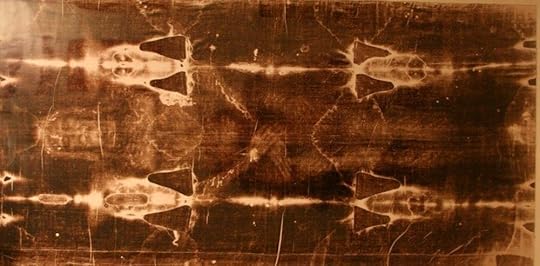
Do not adjust your screen. Negatives of the shroud actually do reveal more detail--3D detail, in fact. That suggests the shroud itself may be some kind of 3D negative.
Again, nobody can reproduce a version of the shroud with all these features. Even if future advances in technology eventually let them pull it off, that's not much argument against a miracle. It would be like saying, "St. Joseph of Cupertino couldn't really fly. He simply used a jet pack."
Here is the point when shroud skeptics play their trump card: "Radiocarbon dating done in 1988 proved the shroud linen dates from the 13th-14th century! The image can't be older than the underlying fabric!"
This theory, too, is replete with holes--pun intended, as you'll soon see.
First of all, researchers have unearthed volumes of historical evidence indicating the shroud's existence prior to the 13th century.
The Pray Codex, a 12th century Hungarian manuscript, depicts Jesus' burial cloth with a pattern of L-shaped dots remarkably similar to the "poker holes" on the shroud of Turin.

Those burn holes provide a host of other clues, such as the fact that folding the shroud four times perfectly aligns the dots so that they could have been caused by a single hot implement, hence the "poker holes" moniker.
Folding the shroud four times also leaves you with what looks like a single cloth bearing a faint image of Jesus' face. That fact is significant, since it provides a missing link from the shroud of Turin to another famed Christian relic, the Image of Edessa.

Edessa was a small city in Mesopotamia whose church boasted a true wonder: an image "not painted by hands."
Shroud skeptics brush off the Edessa image, pointing out that it was said to be an icon only of Christ's face and that its background lore made no mention of it as Jesus' burial cloth.
What they miss is that a faint image of a humiliated, bloody, and naked Jesus would have scandalized ancient Eastern Christians even more than their medieval Western brethren. They also overlook accounts from Pope Stephen III in 755, a 10th century Vatican manuscript, and 11th century Byzantine relic inventories describing a full-body image.
The presence of burn marks, though not the poker holes specifically, may drive the final nail in the radiocarbon dating canard.
That the shroud suffered significant damage in a fire in 1532 is beyond doubt. Two years later, a group of Poor Clare sisters mended the worst of the damage. Their repairs included sewing on patches and re-weaving certain sections. All of the samples taken for radiocarbon dating came either from those sections, or parts of the shroud adjacent to those sections. If a mix of 1st century and 16th century threads were radiocarbon tested in 1988, we'd expect the mean age of the fabric to be a little over 700 years, which nicely matches the actual results.
To sum up, author Mike Flynn has come up with a highly plausible chain of custody for the shroud.
Peter takes Shroud to Antioch, where it is hidden away in the Cherubim quarter against discovery by Jews and Romans.
During reign of Commodus, it is taken to Edessa to "seal the deal" with Lucius Agbar. The story is eventually projected onto an earlier time period.
Becomes dangerous once more to show your head. Shroud is hidden, forgotten, until flood or earthquake opens its hiding place in the wall of the Cherubim Gate. The district becomes known for its special icon.
When Persians destroy Antioch, the Shroud is moved to Edessa, where it plays a folkloric role in foiling a Persian siege. Folded up and kept in a box, it becomes the famous Image of Edessa.
The Roman Emperor decides the Image belongs in the City and the Image is taken to Constantinople, where it becomes known as the Holy Mandylion. Gradually, people seem to become aware there is a full body, and it begins to be associated with the burial shroud of Christ.
Othon de la Roche takes the Shroud to Athens as part of his booty from the Sack of Constantinople and then sends it to Besançon.
Othon's great-great granddaughter Jeanne inherits and she and her husband Geoffrey de Charny house the Shroud at Lirey. (A painting replaces it at Besançon and is eventually destroyed by the French in a Revolutionary hissy fit.)
Margaret de Charny pulls the Shroud from Lirey and puts it in Montfort for safekeeping. The Livey monks never get it back.
Margaret turns the Shroud over to the House of Savoy, who keep it first at Chambéry (where it is damaged in a fire) then at Turin (where it remains to this day).
Applying a standard of evidence consistent with other historical figures, we find that the shroud's authenticity as the burial cloth of a man who was crucified in 1st century Palestine is a less miraculous explanation than the medieval forgery theory.
Think of it this way: If the shroud of Turin were reputed to be the burial cloth of anyone besides a biblical figure, secular researchers would declare it a highly useful source of knowledge about Roman crucifixion and let the matter rest. Instead, because the mere possibility of Jesus' existence sends secular Moderns into CogDis fits, they have to go into full-on Fact Check™ mode.
In other words, the Shroud of Turin is a pictorial Witch Test. That alone lends credence to its divine pedigree.
For a metaphysical thrill ride with a healthy dose of Christian horror, read my award-winning Soul Cycle .
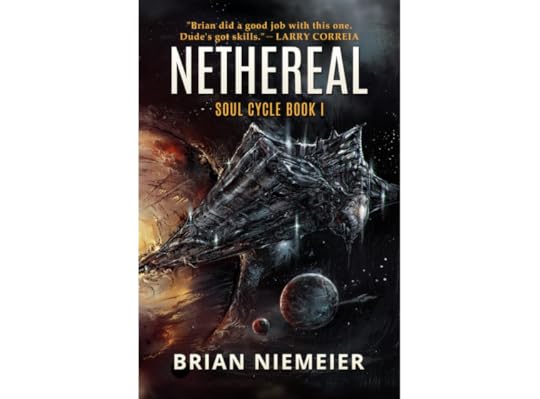
January 14, 2025
Dead Internet

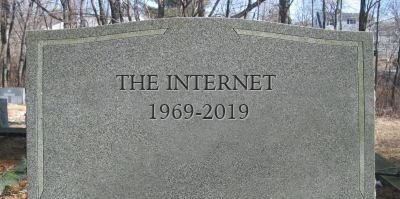
“All the fun accounts are gone.”
“This site used to be fun.”
“Their search engine is broken.”
If you’ve made any of the above complaints, you are justified, and it’s not just you.
The Dead Internet Theory is a loose term used to describe a range of changes and oddities in the structure and content of the internet, which have become increasingly prevalent in the last decade.
This includes:
A massive increase in bots, including the idea that their presence and activity may now be far greater than that of actual people, or at least to a much greater extent than people have been led to believe.
The homogenization and centralization of online content.
The death of a once-rich landscape of smaller communities dedicated to a vast array of subjects, hobbies, niches – all now replaced primarily by disorganized, impermanent, and easily controlled discussion on platforms such as Reddit, Twitter, Facebook, etc.
The idea that AI, considerably more advanced at present than we have been led to believe, is being utilized online for subversive or malevolent purposes, including the creation of increasingly bland and mindless media of the modern world.
This take largely jibes with previous reports of algorithms run amok and social engineering carried out by those haywire algos.
The OP opines on the root cause of the Internet’s demise.
In my view, this was caused more by the economics of the internet itself. The model of a decentralized community works when people are of roughly the same ability level and inclination, as they were back in the 1990s when most were Anglo-American college students.
Once AOL came around and the internet was opened up to the general population, following the idea of Crowdism, the medium adapted to the audience: the internet came to resemble daytime television more than a Wild West of outlaw intellects.
With the rise of internet companies, the need to earn advertising income took over, and consequently, the message tailored itself to the wishful thinking, emotions, and shopping habits of the audience, but this audience was defined by media, which wanted to find a new set of hippies to use as its rebellious sub-culture in order to promote liberalization, or erasure of cultural norms so that more products can be sold.
Those dynamics are certainly in play. However, assigning an economic motive to the internet’s murder smacks of the same reductive logic that leads basic Conservatives ascribe 19th century political ideology to the Death Cult.
Twitter didn’t purge everyone who had anything remotely interesting to say out of greed.
YouTube doesn’t push Death Cult propaganda for money.
Google didn’t have a profit motive for making their search engine useless.
If you’ve gotten the sneaking suspicion over the past couple of years that the internet is purposefully being changed to make you miserable, you’re right. Because the internet has fallen into the hands of oligarchs that hate you.
If you don’t know what a company you deal with produces, you are the product.
What I produce is gritty, not bleak, adventure fiction with heroes you can root for.

January 13, 2025
Defusing the Pop Bomb


Rivers of ink have been spilled in our corner of the counterculture scene about Cultural Ground Zero. For the uninitiated, that’s a shorthand description of the abrupt decline that struck Western entertainment right around 1997. The movie moguls, rock gods, and video game wizards who’d spent the 80s and 90s making one summer blockbuster, S-rank album, and instant classic game after another suddenly stopped.
The magic was gone. It took two bland, repetitive decades for us to realize it, but now there’s no denying that every legacy pop culture institution is in steep decline.
Since volumes have been written about how to contend with and even reverse the trend, today we’ll indulge in some fanciful speculation. It’s a gentle summer day–the perfect time to idly contemplate ‘what if’s.
Specifically, what if Ground Zero had never happened?
That’s a massive question encompassing any number of butterfly effect chains, so we’ll restrict this thought experiment to a trenchant representative example.
Alternate Timeline: Sega Stays in the Game
Excertp from Sega Magazine
In the early 90s, upstart game company Sega enjoyed a meteoric rise that saw them go head-to-head with big dog Nintendo for console market dominance. With consummate businessman Tom Kalinske at the helm, Sega of America actually took the top spot from the Big N at one point.
The honeymoon wasn’t to last. Constant undermining from Sega of Japan, especially multiple ill-advised hardware blunders and a catastrophically botched console launch, lost the 32-bit generation for Sega and set them on their way out of the console market. Their player-centric, arcade-at-home ethos has been sorely missed ever since.
How they could have defused the bomb
Kalinske puts his foot down, possibly even suing his parent company under the terms of the deal SOJ approached him with to lead SOA in the first place.
Legendary albatrosses like the 32X and Sega CD don’t get a stateside release. SOA’s install base isn’t wearied and bilked with gimmick hardware.
More time and resources are put into the Saturn. Absent Japan’s interference, Kalinske seals his deal with Silicon Graphics, whose next-generation RISC chip goes into the Saturn instead of Nintendo’s Project Reality.
The N64 never exists. Nintendo realizes its best bet is to continue its partnership with Sony, resulting in the CD-based Nintendo PlayStation.
Sega releases a more powerful, more reasonably priced and easier to program for Saturn for Christmas, not summer, 95.
The console market remains a head-to-head battle between Sega and Nintendo. The SG-powered Saturn boasts better 3D graphics than the PlayStation, while Sega’s stable of veteran arcade programmers take 2D games to the next level. Nintendo is forced to keep its focus on making player-centric experiences rather than dev wank-offs.
Square releases Final Fantasy VII for both CD-based consoles. They’re compelled to turn in a more refined–and actually finished–version of the game to accommodate the 64-bit Saturn, whose version of FFVII is hailed as the superior, definitive incarnation.
Which might have been something like this:
But the sweetest plum to come out of the 64-bit Saturn pudding would have been the continued flowering of 2D gaming. The few morsels that console gen did give us only ever hinted at what 32-bit 2D games could have accomplished. Trying to imagine player-centric, high production value 2D with no console Ground Zero boggles the mind.
It’s probably just as well, since we’ll never know what might have happened.
Yet every evil is allowed only that greater good may come of it. To see the restoration of mecha mil-SF, read my hit military thriller Combat Frame XSeed: S!

January 11, 2025
Music Ground Zero


A while back, author and musician David V. Stewart did a couple of videos in which he ranked heavy metal albums. One video ranked Metallica's discography, while the follow up graded Megadeth's catalogue (on the front end of his Final Fantasy V stream).
Both are highly worth watching.
David and others have noted familiar but troubling phenomenon evident in both bands' oeuvres.
Metallica and Megadeth broke onto the scene in the early 1980s and achieved superstardom in the early 90s. Then both bands put out disappointing late 90s records that precipitated long declines.

Metallica

Megadeth
This trajectory matches the career path of another megaband whose decline I charted in the original Cultural Ground Zero post.
Before we go any further, it should be noted that David is an educator who's taught at the elementary-through-high school levels. He's explained his grading criteria before, and they're both objective and internally consistent. He's not evaluating these albums based on their popularity or sales, but on the musicianship and production values evident in the finished recordings.
Taking a cue from David, I charted my quintessential Ground Zero band according to similar standards.
Here's what emerged when I objectively evaluated every album by Irish rock band U2--at least every one I've listened to:

Cryptic Writings, Load, Pop, Reload, Risk--all dropped around Cultural Ground Zero.
These three bands are just some of the most prominent examples. Almost every major rock act that got big in the 80s and 90s stumbled right around 1996-1999. What we have here is a record industry-specific Music Ground Zero.
Why did it happen? How did almost every major band lose its groove ca. 1997?
Some blame rock's final divorce from its blues roots. Others point the finger at soul-destroying music software like Pro Tools and Auto-tune.
Others argue that the Low 90s were when the Death Cult clinched its hold on the entertainment industry, and even major acts were forced to parrot the party line.
Still others, like David, point out that the advent of the CD prompted bands to clutter their albums with throwaway tracks beyond the inevitable 8 good ones for fear of "wasting space."
Those are all contributing factors, to be sure. But on the whole, they're symptoms of the secular West finally exhausting the cultural patrimony it inherited from Christendom.
All of Western music lies in the shadow of Mozart, Bach, Beethoven, and Brahms. Those guys composed hymns and Masses. The source of their inspiration isn't hard to figure out.
Revitalizing popular culture will take a revival of Christian art.
Read my thrilling, never preachy, mech adventures in a future where faith matters:

January 10, 2025
Ideas Are Cheap

"I've got a great story idea. You write it, and we'll split the profits 50/50!"
If you're a working writer, chances are you've been approached with an offer like this. Usually it's an earnest and well-meaning layman who makes the pitch.

What ordinary folks don't understand is that ideas are cheap. Some are brazenly lifted from books, movies, TV, and video games. Skilled writers carefully manage their influences to synthesize new concepts.
Some ideas just come out of the ether. A few of my more popular characters stepped fully formed out of my head and introduced themselves.
What most people call "ideas" are actually managed influences combined and developed in appealing ways. As with anything, execution is 99% of the battle.
Most non-writers tend to overestimate the importance of ideas. Pick up any book, turn your television to a random channel, or look out the window. You'll find a hundred concepts that could be the seed of an SFF novel. Jim Butcher's Codex Alera sprang from a bet that he could write a book based on the two worst ideas a panel audience gave him. The crowd came up with the lost Roman legion and Pokemon.
Writers must be readers. If you finish a book and say, "I could never come up with an idea like that!" Chances are you don't read enough fiction.
Ideas are easy. The world is overflowing with them. Execution is the most vital part of the equation by far.
The synopsis of every SFF story sounds dumb because it's just the pure idea without the execution.
A short, hairy-footed gentleman goes on a cross-country trek and returns.
When someone says "I could never think of an idea like that," nine times out of ten he means he couldn't execute it as effectively.
I can't speak for anyone else, but there's a lot going on behind the scenes of my writing--linguistic techniques I use to deliver the story's ideas for maximum effect. People call my stuff layered and dense. They're right, but only a few folks have caught on to what's happening beneath the surface.
But that's just me. You don't have to get down into the paragraph, sentence, & word-level weeds like I do. Just read extensively in your genre, manage your influences, & work hard to hone your execution.
Make my award-winning Soul Cycle part of your reading list, and add the tools I mentioned to your author toolbox.

January 8, 2025
Gaming Ground Zero

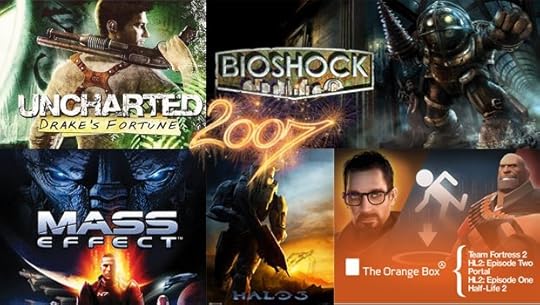
In which author David V. Stewart takes the Cultural Ground Zero ball and advances it ten years down the field:
Maybe you’ve heard of cultural ground zero: 1997 .
Now let’s talk games, because unlike other institutions of culture, the games industry kept on growing and innovating for another 10 years.
Then 2007 happened, and as far as the bigger publishers are concerned, games reached their peak and no more change or risk was required or even advisable. Gameplay seemed to stop changing almost entirely after 2007, and the extent to which it did change is usually in the negative, involving the watering-down of mechanics and general reduction of difficulty.
The stats bear David's theory out. Compare annual US box office receipts to yearly video game industry revenues:
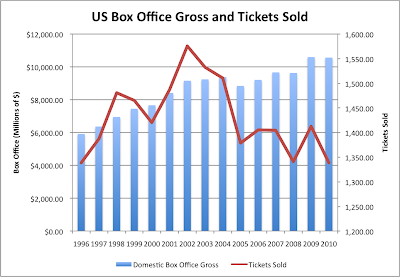
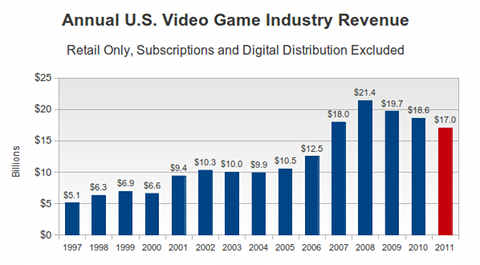
Throughout the late 90s and early aughts, the movie and video game industries were pretty much neck and neck in terms of revenue. That intra-entertainment industry competition stopped being a horse race in 2007, when gaming pulled decisively ahead - doubling Hollywood's take that year.
Don't think for a second that video games' passing of this benchmark escaped the suits in the corner offices. Attaining twice the moneymaking power of Hollywood marked vidya's graduation from a niche hobby to a serious business. They money men had found a new golden goose, and they stepped in to make sure it kept laying the exact same eggs forever.
And like David observed, it all happened in 2007.
What we're seeing the results of now is big game studios throwing pretty much every hit game franchise into the corporate IP death cycle milking phase. All major game IPs from Call of Duty to WoW are endlessly riding a loop from the milking to death to reboot phases.
And it's working. What was a $20 billion games industry at Gaming Ground Zero has grown by an order of magnitude.
Which goes to show once again that, "Get woke, go broke" is a cope. The more gamers complain about the declining quality and innovation in video games, the more money AAA studios rake in.
The same goes for Hollywood. People want their bread and circuses. They know the bread is adulterated with sawdust and the clowns hate them, but they don't care.
All is not lost, however. Consistent personal experience has shown that the main reason normies continue subsisting on thin corporate gruel is they simply aren't aware of any alternatives. In my own market of sci fi publishing, I've seen readers ditch the Wendigs, Scalzis and Kleins of oldpub for masters like Gibson, Howard, and Merritt the second you slap a pulp novel in their hands.
That's not even mentioning contemporary newpub authors like David himself.
Gaining visibility, especially bereft of institutional support, has been a long row for indie creators to hoe. But signs are emerging that newpub is achieving significant market penetration.
Speaking of which, read my Dragon Award-winning horror adventure now:
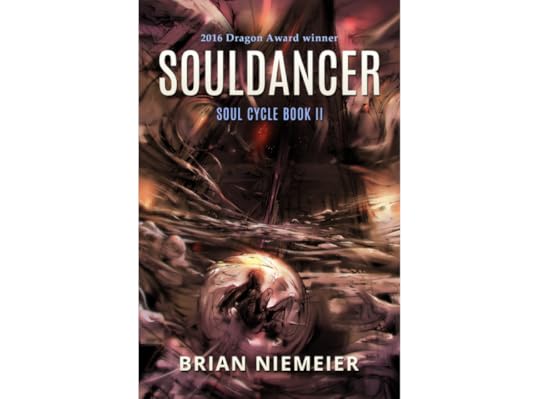
January 7, 2025
How to Popcorn


Regular readers will be aware that I worked for a local movie theater chain in my dissolute youth. During my time there, I learned how to make professional-grade popcorn whose addictiveness one friend equated to crack.
At least I think that's what he said. His mouth was full of popcorn at the time.
Popcorn enjoyers may be flummoxed by their inability to make movie theater quality popcorn at home. It can be done, and by popular demand, I will now tell you the secret.
Step 1: Get the right hardware.What you're looking for is a hand-crank stove top kettle. I use this one.
Pro tip: Electric stoves work best. This is because the commercial-grade kettles movie theaters use are electrically heated. A trick we'll see later is knowing when to turn off the heat. What you want is for the heat level to decrease gradually as the seed finishes popping, and that effect is harder to achieve with gas ranges.
Step 2: Get the right salt.All popcorn salt is not created equal. By far the best I've found is Flavacol butte-flavored seasoned salt by Gold Medal. It's the same kind the better theaters use. Accept no substitutions!
Step 3: Get the right oil.The main reason most homemade and microwave popcorn falls short of movie theater perfection is incorrect choice of popping oil. Vegetable oil is the worst. Avoid it. Butter is OK but dries out too fast. Olive oil is nice, just watch out for the low smoke point. Bacon grease is good for a hipster flair. But there can be only one popping oil to rule them all ...
I speak, naturally, of coconut oil.
It's got a decent smoke point. It's solid at room temperature, and its subtly sweet flavor profile complements popcorn better than any other fat on the planet. Like everything in creation, coconut oil has its own hierarchy:
Refined coconut oil: Good and smooth, but a little bland
Virgin coconut oil: even smoother with a subtle sweet note that elevates popcorn to the next level. This is the minimum requirement for theater quality popcorn.
Flavored virgin coconut oil: Take the excellence of virgin coconut oil, and add natural colors and butter flavor. This is how you turn great popcorn into buttery golden crack.
Step 4: The seed
Believe it or not, the choice of seed doesn't matter that much. Just buy whatever yellow popcorn your store has. I prefer Jolly Time, but corn is pretty much corn.
Step 5: The prepGet a sealable container that holds 1/2 cup of seed with some wiggle room. Fill to just below the top with seed.

Step 6: Add your salt to the seed in the cup.
The ideal ratio is said to be 1 tsp salt per cup of seed. I like my salt, so I do a whole tsp per 1/2 cup. Close the plastic container's lid & shake to coat the outside of every seed w/ salt.
Popcorn turns inside out when it pops, so this step actually seasons each kernel from the inside. Far more efficient and effective than sprinkling salt on top of popcorn after popping.
Step 7: Put your popper on the burner.Add your oil to the kettle WHILE COLD. Do not preheat the kettle. Adding any kind of fat to a hot cooking vessel is asking for a grease fire.
The amt. of oil is up to you. I'd use at least a tbsp.
Set the heat to about 4.5 & melt the oil.
Step 8: Add the seed and salt mixture.Make sure to fully lock down the popper's lid once the seed is in.
Slowly & steadily turn the crank. I give the popper a couple good horizontal shakes for good measure
Step 9: Continue to crank throughout the popping process.When the kernels start to pop steadily, turn off the heat on an electric stove, or turn a gas burner to low. You're gonna let the carryover heat finish the job.
Step 10: When the pops slow to about 1 every 3 seconds, remove the kettle from the heat & pour popcorn into a bowl.Serve.
If you did it right, you will not need additional salt or butter. Adding salt & butter after popping is for amateurs.
Advanced tips:The second batch made in the same popper - provided it hasn't been washed yet - is always superior to the first.
To make the best popcorn in the universe, make your first batch following the steps above, but double the oil. Then, without cleaning out the kettle, immediately pop a second batch with the normal amount of oil. Mix both batches. You're welcome.
WARNING: Once you try the double-oil batch/normal oil batch mix, there is no going back. You will be helplessly addicted for life. Embrace it!
Kairos - by Brian Niemeier
- Brian Niemeier's profile
- 56 followers



